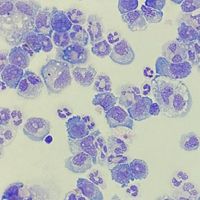New Compound Inhibits Inflammatory Response in Lupus
Scientists at the Research Center for Molecular Medicine of the Austrian Academy of Sciences (CeMM) at the University of Vienna and the University of Lausanne, for the first time, identified and characterized a small molecule which inhibits the interaction of proinflammatory signaling pathways. The new molecule named, “Feeblin”, specifically blocks the interaction between the two proteins: solute carrier family 15 member 4 (SLC15A4) and TLR adaptor interacting with SCL15A4 on the lysosome (TASL). Both SLC15A4 and TASL are involved in proinflammatory signaling, particularly in autoimmune disorders such as systemic lupus (SLE).
SLE is the most common type of lupus and in which the body’s immune system attacks its own tissues. This result includes widespread inflammation and tissue damage. Symptoms include fever, fatigue, joint paint, rash on the face, skin lesions, and appendages, including fingers and toes turning white or blue when cold. Treatment for the disease includes corticosteroid medication to manage symptoms, however there is no cure for lupus. Medication treatment is aimed at improving quality of life, and patients are instructed to manage symptoms through lifestyle and diet modifications. Therefore, determining a more efficacious way to treat lupus is critical to improve patient conditions.
Chronic inflammation is a characteristic of autoimmune disorders and can lead to permanent tissue damage. Several mechanisms and pathways have been found to aid in this process of inflammation, but targeted therapies remain limited. Previous work conducted by Dr. Giulio Superti-Furga, senior scientist and Scientific Director of CeMM, and others identified that the adapter protein TASL is essential in signaling with SLC15A4 responsible for innate immune inflammation. Superti-Furga and colleagues concluded that regulation of TASL and SLC15A4 might be a viable target for therapeutic treatment in patients with SLE.
Superti-Furga and others have built on their previous work and recently published in Nature Communications to demonstrate the inhibition of the TASL-SLC15A4 interaction through a novel compound referred to as “Feeblin”. Scientists first realized that when TASL is not bound to SLC15A4, the two proteins are very unstable. Therefore, the lab discovered Feeblin which regulates the stability of TASL. Further investigation demonstrated that Feeblin blocked the TASL-SLC15A4 interaction and turned off pro-inflammatory signaling. This conclusion was supported by another lab run by Dr. Maojun Yang at Tsinghua University in which SLC15A4 changes its structure when bound to TASL. Yang also confirmed that Feeblin maintains an inhibitory role preventing the binding of TASL and SLC15A4.
Superti-Furga and his team, for the first time, identified a novel inhibitor which represses innate immune signaling responsible for inflammation, particularly in SLE. Previously, there is clinical unmet need to treat lupus. Within three years, this compound was discovered, and its mechanism of action was characterized. This new discovery has the potential to improve SLE treatment and overall patient quality of life. Researchers hope to make Feeblin a new treatment option in the future after further studies confirm its systemic effects. Overall, this new compound has major implications to the field of medicine in which Feeblin can be used to specifically target a major signaling pathway involved in disease progression.
Published, CeMM, University of Vienna, University of Lausanne, Giulio Superti-Furga, Nature Communications, Maojun Yang, Tsinghua University








